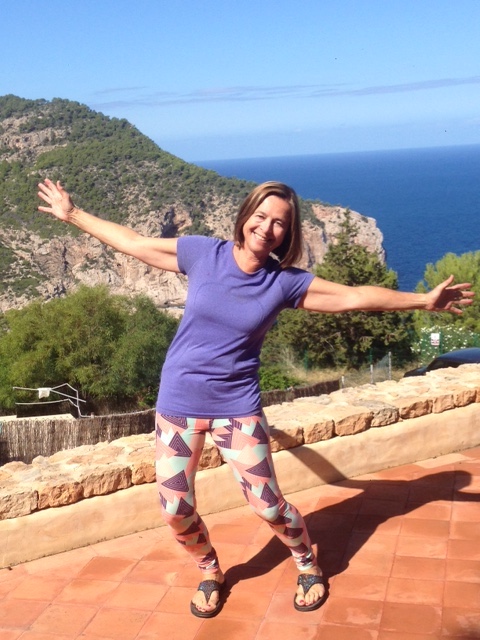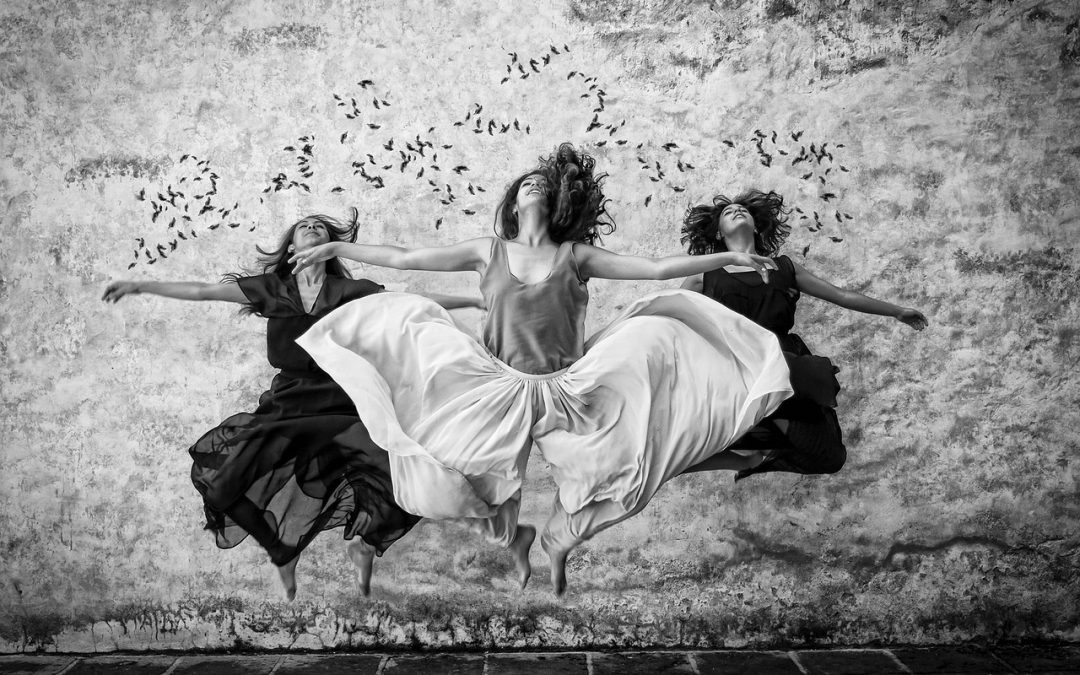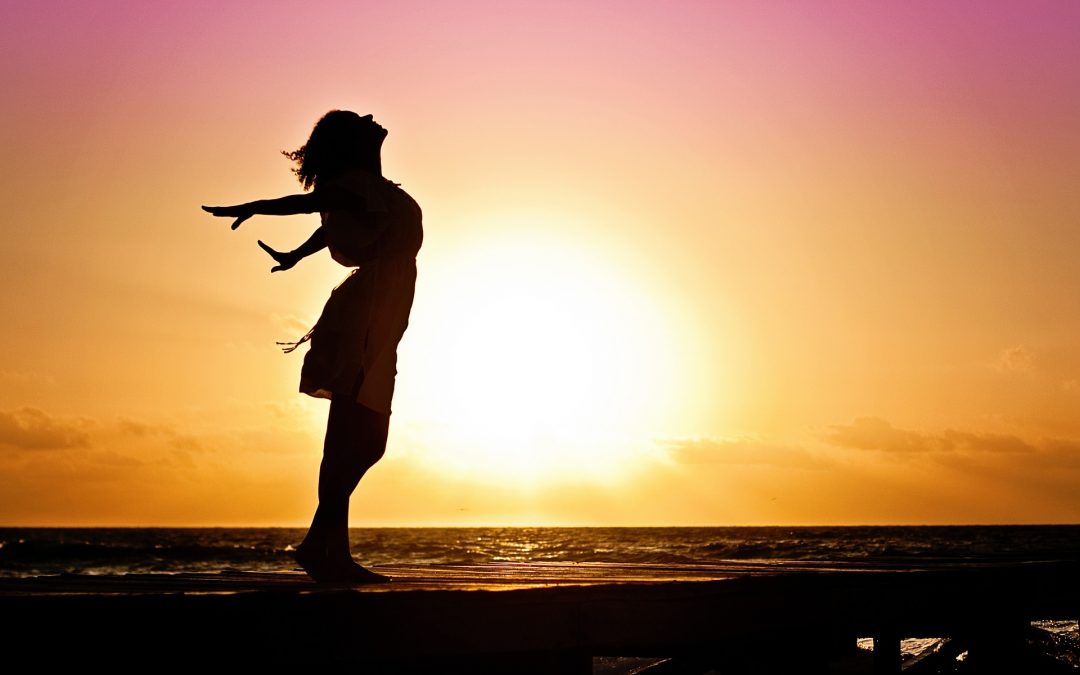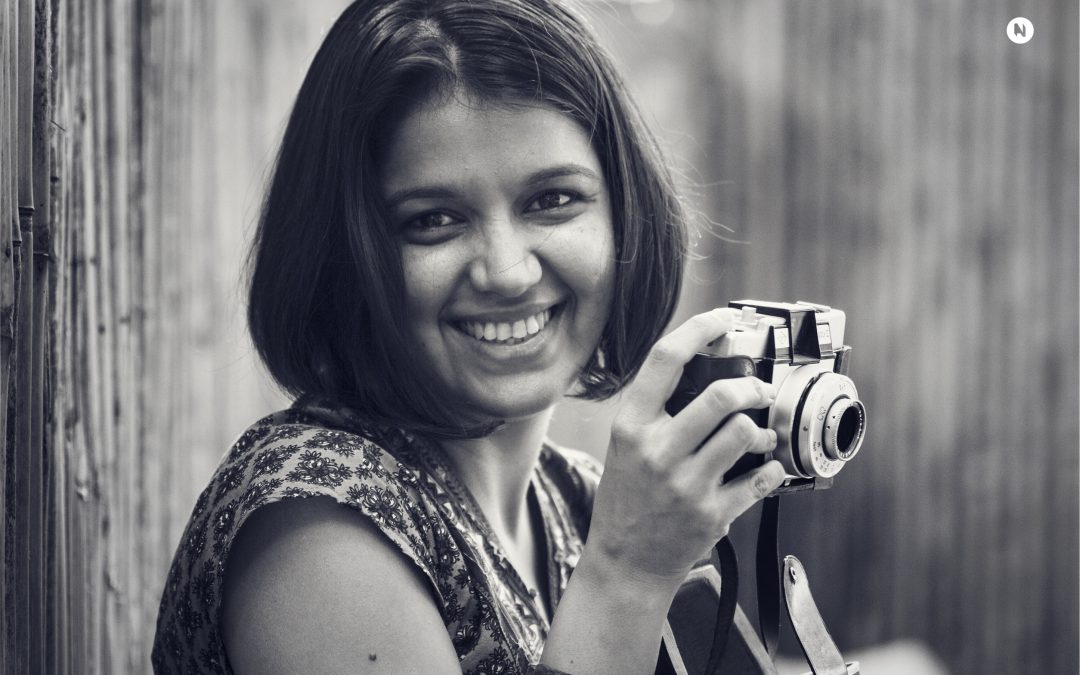
by PT-clc | Nov 8, 2018 | Coping with Change, Dealing with Stress, Entrepreneurship, Leadership, LeadinginUncertainTimes, Self-Care, Stress Management
Our world today is characterized by uncertainty. Our economies, our relationships, our jobs, our futures … . Uncertainty is ever present in our lives. Learning how to change your relationship with and to “befriend” uncertainty reduces stress and has a number of other benefits.
The Cambridge English dictionary defines uncertainty as: “a situation in which something is not known, or something that is not known for certain” and “the feeling of not being sure what will happen in the future” (https://dictionary.cambridge.org).
Recently, I came to a point in my business where I was extremely tired and feeling little passion around what I was doing. I knew I needed to make a change but I wasn’t sure what that change was. I had launched a new website and had rebranded less that one year ago. What was I thinking wanting to change things up yet again? Perhaps I just needed to take a break; to relax and “recharge my batteries”?
It was an unusual situation for me to be in, as in the past when I’ve no longer felt “juiced” by what I was doing or felt that an organizational environment was toxic, either I would leave a position, or change my direction in business, and I nearly always knew what I wanted to do next. This recent experience was different. I did NOT know what to do next and felt uncertain.
What happens when we feel uncertain?
We often experience fear and go into fight, flight or freeze – the stress response – as we feel unsafe and our body wants to protect us. When stress hormones are coursing through our bodies we often don’t make rational decisions.
We may “jump” at the first solution that presents itself so we feel more comfortable. This can be a position that we aren’t suited for because we need the money, or a relationship with someone who comes into our life so we won’t be alone.
We may be influenced by a well-meaning friend or person whose opinion we value, and choose a career or position we have the aptitude for; however one that we are not passionate about, instead of taking the time to figure what really “makes our soul sing” and following that path.
I’ve coached a number of clients who were extremely successful accountants, lawyers, engineers … in their late thirties and early forties, who were dragging themselves out of bed every morning, feeling no passion at all for their work. When asked to reflect on when was the last time they felt passion about their work, many admitted that they never really had any passion for their careers; a well-meaning adult had influenced them in their late teens to; for example, “be an accountant because you’re good at Math.”
There was a time in my life when I became a workaholic because I didn’t want to face the uncertainty of what my life might look like if I left my husband. If I kept busy all the time, I didn’t have to think or feel and I numbed out. Possibly you relate.
Uncertainty means different things to different people. I invite you to take a few minutes to think about your responses to the following questions. You may wish to journal about them.
What does uncertainty look and feel like for you?
Do you typically feel fearful when you experience uncertainty? If so, is your typical response fight, flight or freeze?
Do you react differently if the uncertainty is in your personal life than in your professional life?
From experience I know that we often don’t make the best decisions when we feel uncertain. I also know that for those of us who are used to always “doing”, being busy, and having lots of structure in our lives, it can be challenging to NOT DO, but instead to slow down and BE STILL. Many of us believe that to be valued and loved we need to be “doing” and accomplishing important things. Being what I call “in the void” or “in the space between” is quite foreign to us. That said, it can be an interesting journey and valuable experience to learn to feel comfortable with uncertainty.
So how can you change your relationship with “Uncertainty” and perhaps even make it your friend?
Here are some lessons I’ve learned (often the hard way) to “befriend” uncertainty.
- Acknowledge and Accept that you don’t know what to do and that is okay
- Trust that everything will work out for you and the greater good
- Believe that in time things will become clear
- Know that you can’t force clarity
- Remember that creative processes require time and space
- Learn to listen to and trust in your body’s wisdom; it always knows what is best for you.
Below are some strategies to assist in integrating these lessons into your life.
- Learn to listen to and trust in your body’s wisdom. A good place to start is to begin to integrate some mindfulness practices into your life. These practices help take you “out of your head” and “into your body”. They also focus on “being” rather than “doing”. One example is body scanning. On awakening scan your body from the top of your head to the tips of your toes. Notice if there is any tension, discomfort or pain in any part. If you sense any of these breathe into each part and visualize the tension or discomfort releasing or melting away. Another practice is mindfulness walking meditation[1] that I recommend you do three times a week for 15 to 30 minutes each time.
- Spend regular time in nature. This can be going for a walk in a nearby park at lunchtime, hiking, running by the ocean. Finding your special nature place and going there when you feel stressed or would like some guidance.
- Do yoga regularly. Find a style that works for you. I recommend you do it at least three times a week.
- Communicate with others who are close to you. They will then understand how you are feeling and often “cut you some slack”.
- Reach out for support from family, friends, a coach or a health professional.
- Get lots of sleep. If you’re feeling really tired experiment with going to bed earlier.
- Pamper yourself; have a bubble bath, massage, pedicure, make time to read a favourite author
- Move your body. Put on some of your favorite music and dance around your kitchen or living room.
- Connect with your inner child. Do something you used to do as a child that “filled you up” (e.g. painting, drawing journaling) OR try something you’ve always wanted to do but never took the time for (e.g. dancing, learning to play a musical instrument, singing)
- Don’t worry about what anyone else thinks. Remember that when you follow your heart and acknowledge how you feel, you give others permission to do the same.
I’d love to hear from you about your experience with Uncertainty and what strategies and lessons you have found useful to help you deal with it and perhaps even make friends with it. I welcome your comments below.
[1] A mindfulness walking meditation enables you to get out of your head and into your body. When you walk outside in nature, slowly press one heal and the toes of one foot on the ground followed by the next, being totally present with your movements rather than thinking about all you have to do or reviewing a recent argument with your child or significant other. Focus on all of your senses. Notice the wind on your cheek, the sound of birds chirping, the smell of the salt sea air, see the beautiful vistas that surround you. Notice how you feel while doing the mindfulness walking meditations and after. Over time doing these walking meditations on a regular basis, notice what you notice.

by PT-clc | Oct 4, 2018 | Creative Living, Self-Care, Stress Management
I recently returned from an amazing 7-day yoga retreat in Spain. What made it so amazing? The nurturing and intimate environment that Soulla and her friendly team at https://www.soulshineretreats.com/ created where everything was planned and done for us. From creative vegan meals prepared with love and served by an amazing chef, to the beautiful venue – a huge house overlooking the ocean with an infinity pool; to the candles by our bedsides that were lit each night; to the gifted alternative healers and the thoughtful team who anticipated and cared for our every need.
Soulshine Retreats, run by the experienced yogi Soulla, has about a 60 percent return rate. Out of the 14 people who participated in my retreat, 11 had been to at least one or more of Soulla’s previous retreats. Why do you think that is? Part of it is due to the beautiful spaces Soulla selects, the warm and caring team she has put together, her warm and soothing voice, the creative and thoughtful way she skilfully designs and delivers her daily program of yoga, meditation and workshops. The other reason I believe is that few of us in our busy lives take time out to nurture ourselves. We spend much of our time giving to others; to our families, friends, staff … . We also have packed schedules and spend much more time doing than being. These are several of the key attributes of High Achieving Women that I share in my book – https://pamela-thompson.com/books/.
There is strong evidence to show that if we don’t take the time to create space in our lives to receive and give to ourselves and take time to be, we are often unable over time to cope with the stress of everyday life and either burn out, go on stress leave or get diagnosed with cancer or an autoimmune disorder such as fibromyalgia or multiple sclerosis.
I’m not suggesting that you head off to one of Soulla’s retreats every time you wish to treat yourself; although that would be awesome! I’m suggesting that you create a list of ways that make you feel special and nurtured and consciously incorporate these into your life on a regular basis. Some of mine are:
- Walking in nature in a nearby park or by the ocean close to where I live
- Having a bubble bath with a candle and dim lighting
- Listening to my favorite music
- Having a massage; ideally with the masseuse coming to my home
- Having a pedicure
- Going to live theatre
When I do the above, I feel more relaxed, rejuvenated, creative and in alignment with the mantra I am worthy. I deserve the best and accept the best now.
I’d love to hear from you what things you do to treat yourself and how you feel when you do them. I welcome your comments below.

by PT-clc | Apr 10, 2018 | Change, Conscious Living, Dealing with Stress, Managing Change, Women in Business
Our world is characterized by rapid change and uncertainty. With new technologies, scientific advances, and rapid access to information, increasing expectations are being placed on us to do more things, faster and better. At times we feel stressed, overwhelmed and struggle with the inevitable fear, anxiety and doubt change brings up. I believe that we all have a choice to consciously embrace change rather than to unconsciously react to it.
Why do we fear change?
We are hard-wired to react to change; to protect ourselves and stay safe. Our primitive brains unconsciously “turn on” when we are in a situation that is different; we prefer sameness. Our amygdala (part of the brain) is constantly scanning our environment and when it senses a threat, it sends messages to our bodies to go into fight, flight or freeze. We all have seen friends or colleagues become angry or “edgy” when a change is imposed on them (e.g. new management, downsize, separation or divorce). We’ve also observed others or ourselves going into paralysis, and unable to make a decision. You may find when you are forced into changing something in your life, you typically want to run away from it or “hide your head in the sand”. We all have different ways we react to change.
There is strong evidence to show that we can choose how we respond to change. By consciously changing our beliefs and perceptions we have about change, we can physiologically change the structure of our brain (e.g. create new neural pathways). Dr. Norman Doidge’s amazing work on neuroplasticity described in The Brain that Changes Itself provides strong supportive evidence. Dr. Bruce Lipton in The Biology of Belief, shares powerful scientific evidence to show that all the cells in our body are affected by our thoughts.
How can we reduce our fear of change?
We can:
- Understand how and why we respond to change
- Become aware of our beliefs about change
- Try on some new beliefs around change
- Learn a proven model and tools to help us reduce resistance, and embrace and successfully navigate any change
- Commit to integrating new change strategies into our lives.
The more you understand change and the more self aware you are about how and why you respond to it, the more easily you can embrace and move through it.
So where can you start?
The 5-step Art of Change Framework I’ve developed based on more than 25 years of living, consulting and coaching on 5 continents, is a practical and accessible process. This framework is a proven model for embracing change whether it involves getting unstuck and moving forward when change is imposed on you, or whether you choose to initiate a change in your beliefs, attitudes and/or behaviors.
The Art of Change Framework is based on the belief that embracing change is a creative process that opens us up to new possibilities. Think of the times in your life when change was thrust upon you; e.g. you were laid off; or when a boyfriend/girlfriend broke up with you. At that time, you may have felt caught off guard, angry, fearful and uncertain about the future. On reflection, these changes opened you up to a new and better relationship or a position more aligned with your values and passions.
Embracing change enables you to let go of patterns that are no longer serving you and to move forward with confidence, clarity, improved health, happiness, fulfillment, and inner peace. For examples of this see: https://pamela-thompson.com/let-go-fly-free/.
The Art of Change Framework is a 5-step process for embracing change that uses the metaphor of life as a dance. The steps are:
- Shine the Light – Explore how you respond to change and why
- Choose Your Dance – Identify the transition you want to work on and where you are on your transition journey
- Feel the Rhythm and Learn the Steps – Commit to embracing change in your body rather than resisting it, and begin doing the work associated with the phase of the transition journey you are in
- Practice, Practice, Practice! – Do the work that includes letting go, identifying lessons learned, envisioning the work, relationship or life of your dreams, taking action, and viewing change as a creative process that opens you up to new possibilities
- Consciously Share Your Dance with the World – Observe the positive changes in yourself, how others respond to you, and the positive impact you have on your family, friends, communities and workplaces.
If you’re interested in “diving deeper” into the Art of Change Framework, I encourage you to join me and a group of like-minded women for a fun and interactive one-day workshop “Embrace the Art of Change: From Fear to Freedom” on April 27th in beautiful Victoria, BC. To learn more and to register:
https://www.eventbrite.com/e/embrace-the-art-of-change-from-fear-to-freedom-tickets-44230204733

by PT-clc | Mar 28, 2018 | Change, Coping with Change, Creative Living, Letting Go, Stress Management
“Freedom is a gift you give yourself when you release fear and spread your wings” – https://www.suziecheel.com/
I love this quote by Suzie Cheel!
What do you need to do to move toward freedom or in other words what do you need to let go of, in order to fly free? …
It could be letting go of deep-seated beliefs such as:
- In order to be loved and valued I need to perform and achieve
- If I give to myself, I am selfish.
- If I go really big with my business and am successful, I won’t have time for myself or to spend with people I care about.
It could be behaviors that are no longer serving you such as:
- At networking events or in social situations when meeting someone new, leading with what you know and what you’ve done so that people know you’re smart and accomplished, instead of leading with genuine interest in and questions about the person you’re interacting with.
- When speaking with someone at home or work, instead of focusing on them and being present, rather thinking of the next thing on your “to-do” list.
- Reacting negatively when changes happen or are imposed on you instead of thinking “what am I meant to learn from this experience”?
I recently completed a six-week “Soul Painting” course with Kimberly Leslie – https://www.kimberlyleslie.com/– an artist, healer and intuitive. I was interested in learning how to paint with acrylics, plus I was intrigued by the opportunity to be guided and supported in a small group to “create a painting in a sacred space that invite(d) my soul to share itself with me.”
The process was fun; I got to connect with my inner child and to finger paint. I was amazed at the energy in everyone’s painting, and was intrigued by the process and what I learned about myself through it. At the final class, the completion class, Kimberly guided us to ask our paintings what else they needed. At one point I put mine up against the wall, sat in front of it and asked what more was I meant to learn from it. Tears began to stream down my face and I asked what the emotion was about. I got the strong message that I didn’t need to perform and achieve in order to be loved and valued, instead by being myself I am valued and loved. It was a powerful moment.
There are a number of transformational techniques I’ve found useful for myself and my clients, that enable us to let go of beliefs and behaviors that are no longer serving us and move closer to flying free. In addition to the course I mentioned, they include:
- Spending regular time in nature
- Doing mindfulness walking meditations
- Journalling in the morning first thing or just before going to bed
- When faced with a challenging experience or change that is imposed on you, spending time “going inside” and asking “what am I meant to learn from this experience?”
- Participating in a group program or workshop where you are supported by an experienced facilitator and coach/mentor and learn how to turn your fears and doubts around change into living with more aliveness, creativity and joy such as:
https://www.eventbrite.com/e/embrace-the-art-of-change-from-fear-to-freedom-tickets-44230204733
If you’d like to learn more about how to “Let Go and Fly Free”, I’d love to have you join me and a small group of like-minded women in a beautiful natural environment for a one-day workshop Embrace the Art of Change: From Fear to Freedom on April 27th in Victoria. If you live up Island, or in such places as the Lower Mainland, the Okanagan or Washington state, if this speaks to you, I encourage you to join us and and spend several days in beautiful Victoria!

by PT-clc | Aug 17, 2017 | Coping with Change, Embracing Change, Leadership, Powerful practices
What if we all viewed change as a creative process that opened us up to new possibilities? Do you think our relationships, workplaces, communities and the world would be different?
Let’s explore this perspective a bit further. Imagine if you were laid off. Instead of feeling angry, anxious and unsure of what to do next, what if you viewed the change as an opportunity to do something new, perhaps launch a new business you’d been thinking about for a few a few years, but had been afraid to start?
What if after a partner left you, you took the time to reflect on the relationship; what worked well and what didn’t? And, you took the time to write down all the lessons learned from the relationship as well as the qualities you wanted in a significant other and in a relationship? For example: someone who makes me laugh, who is a great communicator, someone who is physically active, and who loves being in nature? I did this a number of years ago and within 5 months of doing so my life partner and soul mate showed up who had all of the qualities I had written on my list!
Imagine if you were working in an organization that had a change in leadership, and instead of feeling uncertain and fearful, you viewed the change as an opportunity to learn and grow.
I invite you to “try on” this new perspective of viewing change over the next week and notice what you observe. It could be something as small as changing the way you usually respond to a person or situation. I welcome your comments and experiences below. Feel free to share this post with others who you think might benefit.




